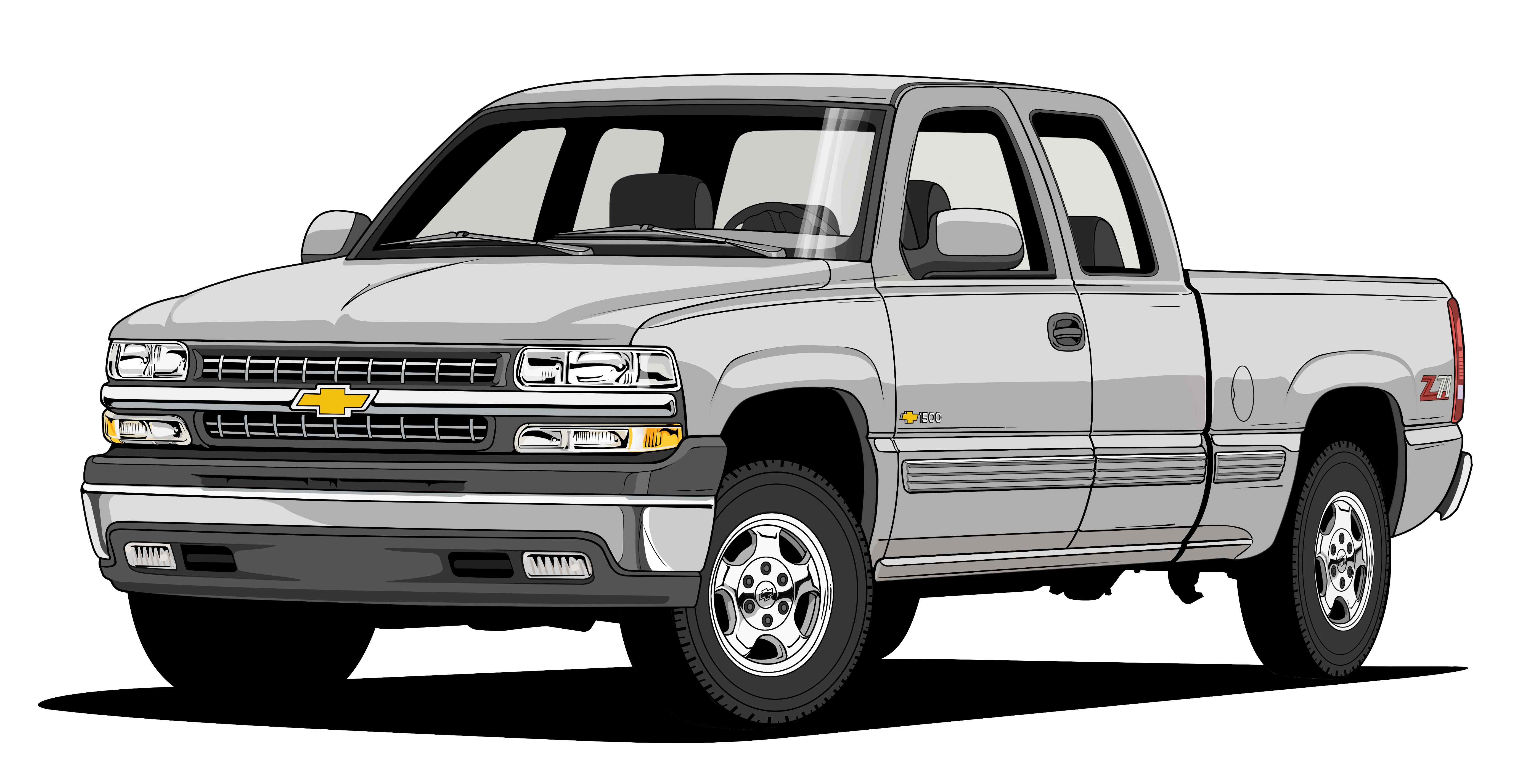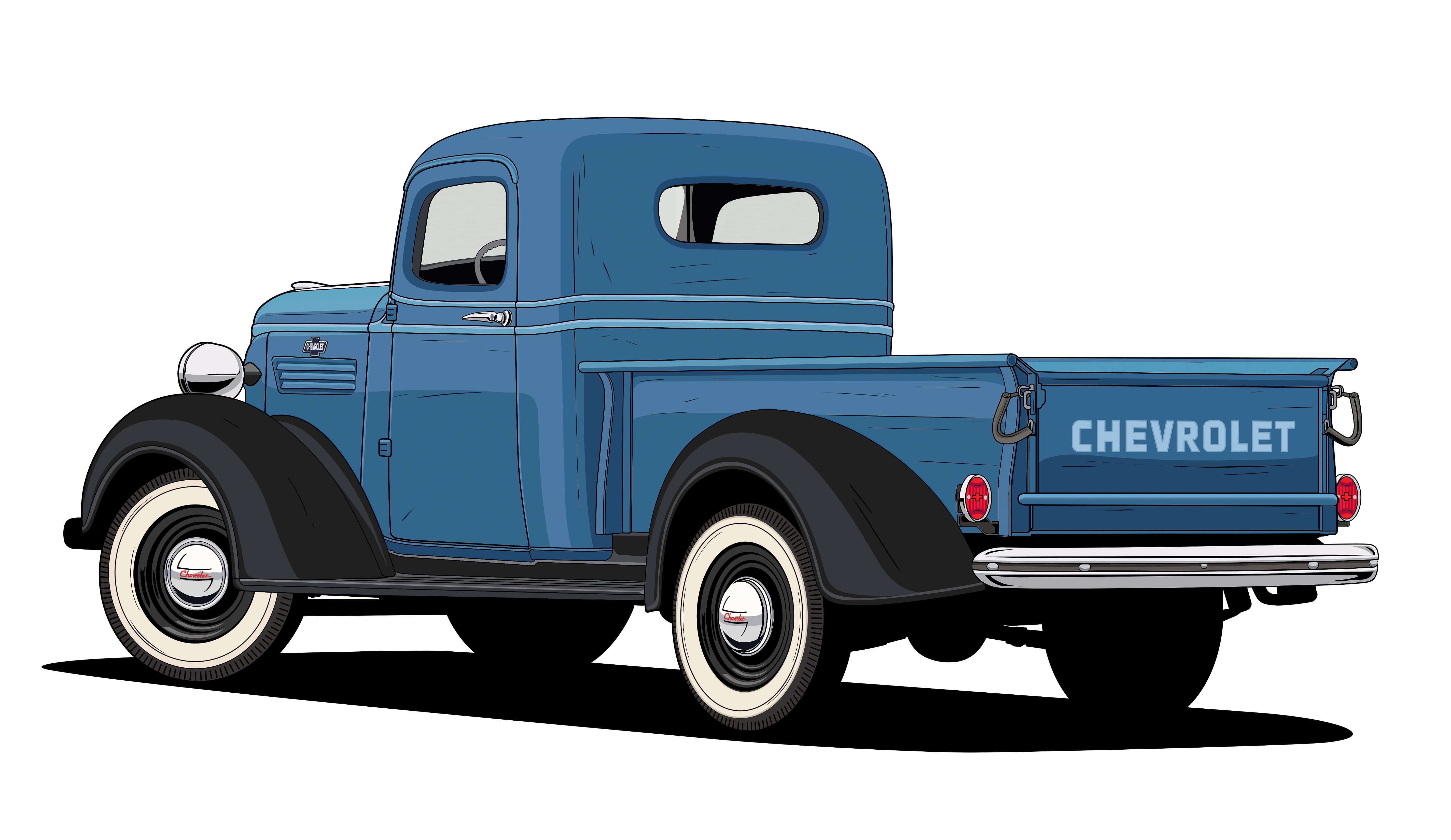Chevy trucks started off 100 years ago with the introduction of the 1918 Chevrolet One-Ton, putting the Detroit brand into the pickup game with Ford, which had debuted its Model TT truck the year before.
Chevrolet celebrates the centennial milestone by looking back at the 10 most significant designs of the past 100 years, in which designers focused on function for the farm or worksite but also with an eye on style.
“Today, the Chevrolet truck design studio is focused on purposeful design that creates personality and customization options for a wide breadth of truck customers,” said Rich Scheer, director of Exterior Design for Chevy Trucks. “Looking back on the past century of truck design, I realized that Chevrolet designers have been focused on the same goals since the very beginning.”
Here are the 10 Chevy trucks that the automaker has picked out as “most-iconic,” along with a design perspective from Scheer:
![]() 1918 One-Ton: The first production truck from Chevrolet was inspired by vehicles used in plants to move parts and pieces from place to place. In the simplest terms, this is an example of form follows function. It was a rolling chassis featuring an open cab, an inline four-cylinder engine and an open frame allowing customers to install the body that fit their unique needs.
1918 One-Ton: The first production truck from Chevrolet was inspired by vehicles used in plants to move parts and pieces from place to place. In the simplest terms, this is an example of form follows function. It was a rolling chassis featuring an open cab, an inline four-cylinder engine and an open frame allowing customers to install the body that fit their unique needs.
One striking design element is the beautiful badge, which was clearly a designed element of this truck. The font, the proportions and the dark blue, almost black color make a very sophisticated bowtie, even by today’s standards.
![]() 1929 International Series LD: The 1929 was the first Chevrolet truck to feature a closed cab, which created the potential for what we know as interior design today. As with all designs, once the functional elements were defined, more comfort- and style-focused features started to become important for truck buyers.
1929 International Series LD: The 1929 was the first Chevrolet truck to feature a closed cab, which created the potential for what we know as interior design today. As with all designs, once the functional elements were defined, more comfort- and style-focused features started to become important for truck buyers.
It’s amazing how fast they went from the purpose-built 1918 truck to a more styled, closed-cab truck. This is also the time when we started to introduce color. The color combinations on Chevrolet cars and trucks from this period are something I still love today.
![]() 1938 Half-Ton: This was the first truck designed in the newly formed Art and Colour department, which was later to be known as the Design Center, by Harley Earl and his team. (Earl became GM’s first design chief.) This year also saw the designs of cars and trucks deviate, as Design realized the need for trucks to have their own identity.
1938 Half-Ton: This was the first truck designed in the newly formed Art and Colour department, which was later to be known as the Design Center, by Harley Earl and his team. (Earl became GM’s first design chief.) This year also saw the designs of cars and trucks deviate, as Design realized the need for trucks to have their own identity.
As such, it is arguably the first example of Design’s influence on trucks. The proportions really evolved from the earlier designs, creating a lower and longer truck with a styled grille and elegant, swept fenders.
![]() 1947 3100 Series: This is one of the most iconic designs in automotive history. If you mention a vintage Chevy truck, I think almost everyone will picture this model in their mind. It was such a departure, advertisers coined the phrase “Advance Design,” because it was bigger, stronger and sleeker than ever before.
1947 3100 Series: This is one of the most iconic designs in automotive history. If you mention a vintage Chevy truck, I think almost everyone will picture this model in their mind. It was such a departure, advertisers coined the phrase “Advance Design,” because it was bigger, stronger and sleeker than ever before.
The five-bar horizontal grille is a departure from vertical grilles of the past and was the very beginning of what became a signature of Chevrolet truck design. You can see that the fenders are more integrated and the lamps are on the wide part of the vehicle instead of inboard, giving it a wider, stronger presence. The result is very handsome design with great proportions.
![]() 1955 Cameo Carrier: Known as the Task Force truck, the Cameo Carrier is Chevy’s first Fleetside design. The bed surface is flush with the cab and fender, making for one complete, elegant shape from front to back. It was also Chevrolet’s first bumper-to-bumper styled truck, as styling didn’t stop at the back of the cab. During this time, styling became a selling point for cars, inspiring more focus on design for trucks as well. This was definitely the heyday of American automotive styling and ornamentation.
1955 Cameo Carrier: Known as the Task Force truck, the Cameo Carrier is Chevy’s first Fleetside design. The bed surface is flush with the cab and fender, making for one complete, elegant shape from front to back. It was also Chevrolet’s first bumper-to-bumper styled truck, as styling didn’t stop at the back of the cab. During this time, styling became a selling point for cars, inspiring more focus on design for trucks as well. This was definitely the heyday of American automotive styling and ornamentation.
![]() 1967 C10 Fleetside: This is the first truck that I really fell in love with. It’s a beautiful, sleek design with a hint of wheel flare. I also really appreciate the line that flows away from the top of the bed line and the beautiful balance with the front of the vehicle. This is a feature that can easily go wrong, but the designers of the time did it so right.
1967 C10 Fleetside: This is the first truck that I really fell in love with. It’s a beautiful, sleek design with a hint of wheel flare. I also really appreciate the line that flows away from the top of the bed line and the beautiful balance with the front of the vehicle. This is a feature that can easily go wrong, but the designers of the time did it so right.
The body side has a strong shoulder that tapers toward the rear. The Chevrolet bar on the front fascia connects the headlamp center with the bowtie — a design element that is still consistent today. This time period is also when metallic paint was introduced, which highlighted the subtleties and body lines that weren’t as obvious before.
![]() 1973 C30 One-Ton Dually: This third-generation C/K square-body truck was the first crew cab dually to market, and many consider it to be the first modern Heavy Duty Truck. The design reflects a dramatic increase in capability for customers who used their trucks for both work and recreation. It is simple, tough and purposeful, similar to the earliest Chevrolet trucks.
1973 C30 One-Ton Dually: This third-generation C/K square-body truck was the first crew cab dually to market, and many consider it to be the first modern Heavy Duty Truck. The design reflects a dramatic increase in capability for customers who used their trucks for both work and recreation. It is simple, tough and purposeful, similar to the earliest Chevrolet trucks.
![]() 1988 C/K1500: The C/K1500 was the first truck design influenced by aerodynamics. This generation had great design reach, meaning it looked very advanced for its time. That is especially true for the new interior design, with a low instrument panel, pod-like setup and even buttons that looked futuristic. This truck still looks modern and sophisticated 40 years later.
1988 C/K1500: The C/K1500 was the first truck design influenced by aerodynamics. This generation had great design reach, meaning it looked very advanced for its time. That is especially true for the new interior design, with a low instrument panel, pod-like setup and even buttons that looked futuristic. This truck still looks modern and sophisticated 40 years later.

1999 Silverado 1500 LT Z71: This was the first generation that used the Silverado nameplate. It also introduced many of the modern design elements that customers associate with current Chevy truck design, especially the iconic Chevrolet front end.
![]() 2007 Silverado 1500: The 2007 Silverado is simple, modern and powerful, featuring exaggerated wheel flares and a clean body side. It’s another evolution for Chevrolet trucks in creating their own identity on the road, with distinctive front and rear ends. This truck brought back the “tough truck” look and feel, even though it was still heavily influenced by aerodynamics.
2007 Silverado 1500: The 2007 Silverado is simple, modern and powerful, featuring exaggerated wheel flares and a clean body side. It’s another evolution for Chevrolet trucks in creating their own identity on the road, with distinctive front and rear ends. This truck brought back the “tough truck” look and feel, even though it was still heavily influenced by aerodynamics.






I know that the El Camino was more car than truck, but it should have received an Honorable Mention
I agree, If the El Camino is not iconic, I don’t know what is.
55 El Camino….
The golden times are represented by the 3100 series from 1947 to 1954, the 1/2 ton truck is the best, the design of the 3100 is pure art for a work vehicle
You missed one of my favorites. I had a 2004 Silverado WT 1500. It was the best truck I ever owned. After 10 years, it still looked like new and never failed mechanically. Getting ready to buy a new 2017 model. Chevy trucks forever.